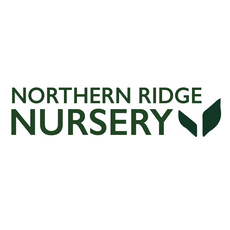Indoor Gardening 101: Essential Tips for Thriving Plants
Indoor gardening offers a sustainable and enjoyable way to beautify your home and improve air quality, but knowing the essentials can mean the difference between a thriving garden and a collection of sad, wilting leaves. This article serves as your comprehensive guide to mastering the art of indoor gardening, ensuring your green space flourishes all year round.
Understanding the Basics of Indoor Gardening
Before diving into the specifics, it’s important to grasp the fundamental elements that impact the health and growth of indoor plants. These include light, water, humidity, temperature, and soil composition. Balancing these factors is key to nurturing healthy, robust plants.
1. Light: The Life Source for Indoor Plants
Light is crucial for plant growth. Most indoor plants require indirect, bright light. It’s essential to understand the light requirements of each plant species:
- Low Light: Perfect for plants positioned several feet away from south or southwest-facing windows, or in rooms with few windows.
Consider rotating your plants periodically to ensure all sides receive equal exposure to light, promoting even growth and preventing leaning.
2. Watering: Striking the Right Balance
Watering practices differ drastically among plant types and depend on factors like humidity and light levels. Here’s a basic guideline:
- Over-Watering: Avoid letting your plants sit in waterlogged soil which can lead to root rot and fungal issues.
3. The Right Temperature and Humidity
Most indoor plants flourish in conditions that simulate their native habitats. A typical range of 65-75°F (18-24°C) works well for many Houseplants during the day, with slightly cooler temperatures at night. Increasing humidity can be beneficial for tropical plants. A few ways to improve humidity include:
- Using a humidifier.
4. Soil and Fertilization: Feeding Your Indoor Garden
Selecting the right type of soil and understanding the fertilization needs of your plants are crucial for good health. Opt for a high-quality potting mix that provides good drainage and fill it with essential nutrients. Fertilize your plants primarily during the growth period (spring and summer), tapering off in fall and pausing in winter.
Choosing the Right Plants
Start with plants that are known for their resilience and low maintenance requirements, especially if you're a beginner. Some of the most hardy indoor plants include:
- Spider Plant (Chlorophytum comosum)
Weigh your climate, space, and time commitments when selecting plants to ensure that you are creating a manageable and sustainable indoor garden.
Advanced Tips for Seasoned Gardeners
For those with some gardening experience looking to refine their skills:
- Propagation: Learn how to propagate your favorite plants through cuttings or by division to expand your plant collection or share with friends.
Problem Solving in Indoor Gardening
If you encounter common issues such as yellowing leaves or stunted growth, assess and adjust the basics of care:
- Ensure proper lighting and rotate your plants for uniform exposure.
Final Thoughts
Indoor gardening can transform your living space by adding a touch of greenery that benefits both the aesthetics of your home and your well-being. By mastering these essential indoor gardening tips, you're not just cultivating plants, but growing a new hobby that will flourish and satisfy for years to come.
Ready to Get Started?
If you’re feeling inspired to begin or enhance your indoor gardening journey, visit our shop for all your plant-care needs—from high-quality potting mixes to the most visually stunning Houseplants. Let’s nurture nature together! Shop now and bring the joy of gardening indoors!










